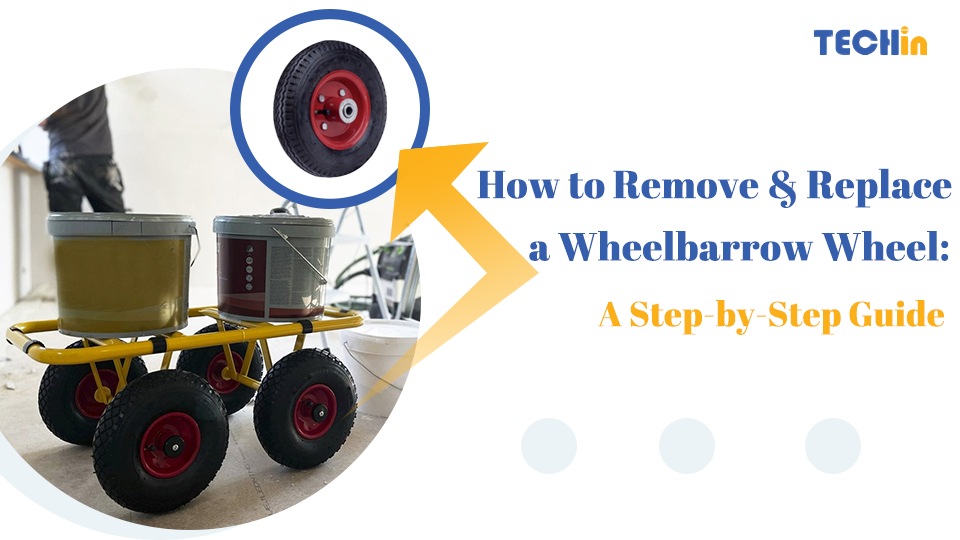Tired of equipment that’s hard to move or makes noise and damages things? When you choose the wrong wheels, you’ll spend more time maintaining your equipment and less time getting things done. Rubber caster wheels solve this problem by making your equipment move smoothly, quietly, and without causing damage.
Why Rubber Caster Wheels Are Essential for Machinery and Equipment
You need rubber casters for your machinery and equipment because they absorb shock, reduce noise, and roll smoothly over rough surfaces. They’re made of rubber, so they absorb vibrations and protect your equipment and the floor. You need rubber casters for your industrial, medical, or commercial use to make things move easier, safer, and faster.
Now that you know why you need rubber casters, let’s talk about what they are, how to choose the right ones, and how to maintain them so they last a long time.
What Are Rubber Casters?
Rubber casters are wheel assemblies made from natural or synthetic rubber, designed to provide smooth and silent mobility. They’re typically mounted on equipment and furniture to allow easy movement. Rubber wheels can come in various designs—solid rubber, pneumatic, or thermoplastic rubber—each suited to different environments.
These casters are commonly used in settings where protecting floors and reducing noise is a priority, such as hospitals, warehouses, and offices.
What Are the Advantages of Rubber Casters?
Rubber caster wheels offer multiple benefits that make them ideal for various industrial and commercial applications:
- Shock Absorption: The elastic rubber material absorbs shocks and vibrations, protecting delicate loads.
- Quiet Operation: Perfect for noise-sensitive environments like hospitals or schools.
- Floor Protection: Rubber won’t scuff or damage floors, unlike metal or hard plastic.
- Improved Traction: Rubber grips better on slick or uneven surfaces.
- Affordability: Rubber casters are generally more cost-effective than polyurethane.
These rubber casters advantages make them a go-to solution for smooth and safe mobility.
What Are the Uses of Rubber Casters?
Rubber casters are used across a wide range of industries:
- Machinery & Equipment: For smooth, quiet, and floor-safe movement of heavy tools.
- Medical Equipment: Reduce noise and prevent floor damage in sensitive environments.
- Retail & Supermarkets: For shopping carts and movable shelving systems.
- Office Furniture: For desks, chairs, and storage units requiring gentle maneuverability.
- Food Service Carts: Offering hygienic, noise-free movement.
Whether you’re sourcing caster wheels for machinery or the best caster wheels for equipment in high-traffic environments, rubber casters deliver.
How to Choose Rubber Casters?
Selecting the right rubber casters depends on several key factors:
- Load Capacity: For heavy-duty applications, opt for industrial-grade rubber casters with reinforced frames.
- Environment: Use non-marking rubber wheels indoors, or weather-resistant ones outdoors.
- Wheel Type: Choose solid rubber for durability, pneumatic for cushioning, or thermoplastic for light-duty use.
- Floor Type: Soft rubber works best on hard floors like tile or concrete.
- Material Comparison:
- Rubber vs. Polyurethane: Rubber is quieter and softer; polyurethane is more durable and better for heavy loads.
- Rubber vs. Plastic: Rubber offers better grip and noise control, while plastic is budget-friendly but less durable.
Always consider heavy-duty caster wheels if your machinery operates in demanding conditions.
Maintenance Tips for Rubber Casters
To extend the life of your caster wheels, follow these simple maintenance tips:
- Clean regularly to remove debris that can wear down the wheels.
- Inspect for cracks or wear, especially if used on rough surfaces.
- Lubricate bearings every few months to ensure smooth swiveling and rolling.
- Avoid overloading, which can flatten or damage the rubber.
- Check mounting bolts and tighten if loose.
These caster wheels maintenance practices help avoid early replacements and ensure long-term performance.
FAQ
1. What Is the Lifespan of Rubber Casters?
Rubber casters typically last 1 to 5 years, depending on load weight, frequency of use, and environmental conditions. Regular maintenance can significantly extend their lifespan.
2. Are Rubber or Polyurethane Casters Better?
Rubber casters are better for quiet, smooth rolling and delicate surfaces. Polyurethane casters offer higher load capacity, better abrasion resistance, and are ideal for rough industrial floors. Choose based on your specific needs.
3. What Is the Difference Between PU and Rubber?
PU (polyurethane) is harder and more durable, ideal for heavy-duty applications. Rubber is softer, offers better grip and shock absorption, and is quieter. PU is more resistant to chemicals, while rubber is better for indoor use.
4. Can Rubber Casters Be Used Outdoors?
Yes, but choose weather-resistant rubber casters. They should be sealed against moisture and UV rays. Pneumatic rubber casters are ideal for uneven or outdoor surfaces.
Summary
Rubber casters are a great choice because they’re durable, perform well, and are safe. They reduce noise. They protect your floors. They’re perfect for professionals and regular people. If you have any questions or need help picking the right ones, let me know.








